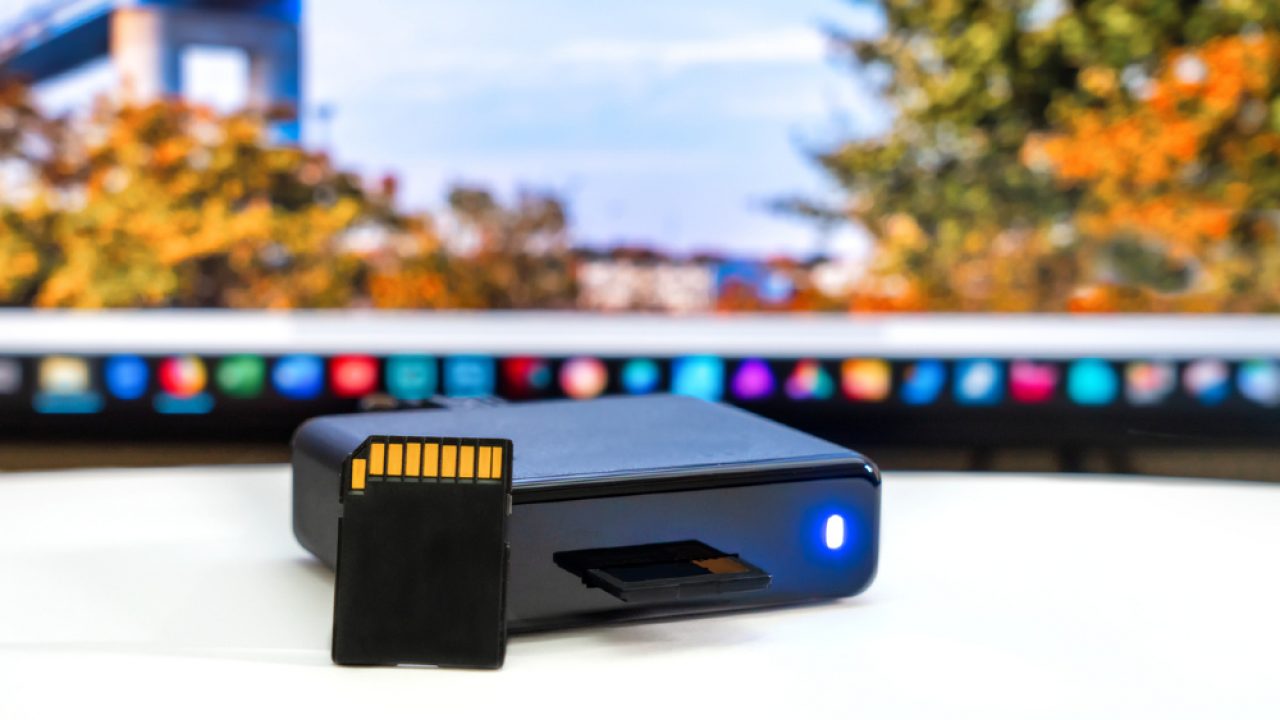
Home Reviews Electronics Supercharge Your Transferring Speed With the Best Memory Card Readers
TechJunkie Expert Recommendations
TechJunkie is supported by our readers. When you make a purchase through our links, we may earn a commission. Read More.

We may earn a commission if you make a purchase through one of our links. The newsroom or editorial staff was not involved in the creation of this content.
Long gone are the days when every laptop came with a built-in memory card reader. On the road to slimming down their devices, brands have started to ditch this handy slot. And even if the reader is retained, the transfer speeds are so dismally slow that they could give Internet Explorer a run for its money. This becomes a problem for content creators who extensively use memory cards because of the vast compatibility and reading speeds they provide. This is where a stand-alone memory card reader comes into place. Simply put, these devices hold the power to read your flash memory cards and transfer the data in them to any device at breakneck speeds. With the online marketplace being so vast, we’ve curated a list of the leading memory card readers of 2023.
Boasting a super-fast transfer speed of up to 5 Gbps per second, this memory card reader from SmartQ does a lot of things better than its peers. With its four-slot design allowing you to access and edit four different cards at the same time it also boasts amazing media flexibility. From SD cards to Compact Flash, this bad boy can handle them all like a champ.
Customers particularly appreciate just how easy it is to use this device. In addition to not requiring any additional software, its amazing face value makes it perfect for students and those who are on a tight budget.
This super functional memory card reader by Cococka boasts three plug variations of USB 2.0, micro USB, and USB C. Resulting in ample flexibility, you’ll get a product that can make short work of reading through a variety of formats. You can also expect faster downloads and shares than ever before with transfer speeds of up to 5 Gbps.
One great thing about this reader is it is designed for almost all operating systems, including Windows 7, 8, 10, 11, Vista, XP, Android, and MAC OS 10.4.6. On top of this, its operation doesn’t require any additional software.
The UGREEN card reader offers great functionality at a low price, making it a steal deal for those with a limited budget. It is widely compatible with most formats and operating systems, and it can accommodate four card slots (SD, TF, CF, and MS). It also allows you to read four memory cards at once.
This memory card reader features a USB 3.0 architecture, allowing you to transfer your media and files at up to 5.0 Gbps. While the built-in wire might prove irritating for some, it has a compact and portable design.
This SD card reader is suitable for various cards, including MMC, SD, and micro SD. Adding to its easy operation, it has dual interfaces (USB 3.0 and USB C) which let you share data with other devices at a fast 5 Gbps. Thanks to the USB 1.1 and 2.0 interfaces, you can also read and write two cards simultaneously and ultimately deter the hassle of plugging and unplugging.
Anker’s memory card reader hosts a variety of formats including SD, micro SD, mini SD, and MMC. It can read and write two cards simultaneously for added convenience, and its broad compatibility with different operating systems makes it perfect for those who intend on using their memory card reader for multiple devices.
This reader is manufactured from premium-quality plastics and chips for superior durability. Its USB 3.0 interface provides amazing speeds of up to 5 Gbps, and there is a built-in LED display here as well to indicate the transfer in progress. Coupled with its meager weight, it’s also extremely travel-friendly and perfect for those on the go!
As its name suggests, a memory card reader allows you to read the data on your memory flash drive by connecting the peripheral to a computing device. The best ones on the market also offer you the option to write this data without the need for any third-party software.
A memory card reader has become a necessity as many modern laptops do not come with an in-built flash card reader anymore. Even if your laptop boasts this slot, chances are the transfer speeds will be too low. A good-quality memory card reader will solve this problem by allowing you to read and write data at super-fast speeds, and ultimately at a more budget-friendly price.
Simply insert your memory card into the reader. Afterwards, just insert this peripheral into your computing device and follow the instructions on the screen to access the data on the drive.
Evident signs that your memory card reader needs replacement is a lacking or absent connection. Other signs are an evident build up of dirt or grime within the SD card itself that doesn’t go away even after cleaning. While it may be tempting to extend the use your SD card in these cases, it’s recommended to replace them to ensure you don’t run into future technical problems.
If you don’t see an app that should be here, let us know what it is